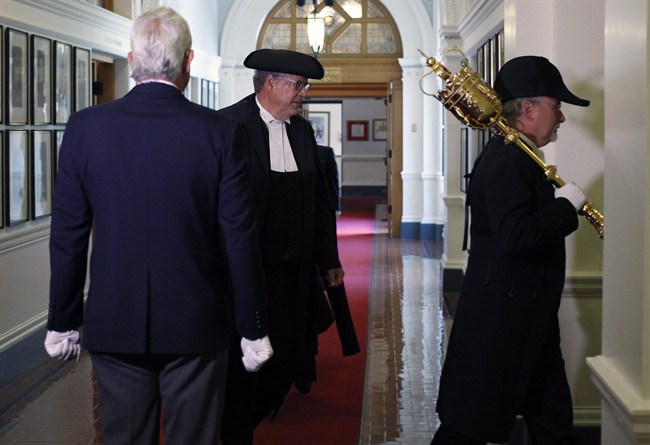With the clock ticking down to Thursday’s confidence vote, and with it the potential fall of the BC Liberal government, questions remain as to how an NDP government would handle the Speaker’s job.

With the NDP-Green alliance holding just 44 seats to the Liberals’ 43, an NDP Speaker would be thrust into a regular tie-breaking role.
Vancouver Sun columnist Vaughn Palmer joined the Simi Sara Show Tuesday to explain how the party now plans to get around that snag.
The problem
One of the major issues the NDP is facing is how to handle regular votes in the course of hammering out new legislation.
In the BC legislature, this “sausage making” stage is known as going into committee, and refers to poring over detailed ministry estimates or clause-by-clause debate and amendments during the crafting of new laws.
But when the House goes into committee, the Speaker leaves the room and the government appoints a Deputy Speaker to preside over debate.
That would actually leave the governing alliance in a minority position, with 42 seats to the Liberals’ 43.
The NDP’s plan
Until Tuesday, the NDP and Greens had publicly discussed changing the rules of the House to get out of this trap, something critics had charged would threaten a government with such a slim majority’s legitimacy.
But Palmer said NDP House Leader Mike Farnworth has now presented the NDP’s way forward, and it involves using existing rules with plenty of precedent.
Palmer said the government can use one of the legislature’s standing orders to refer contentious issues to a smaller committee, called a ‘Committee A,’ in which the government holds a majority.
“We call it the ‘Little House’ because they send it to, actually it’s a very large committee room here, it’s not the chamber itself,” Palmer said.
The procedure was developed in the 1980s by the Social Credit Party, and has been used by both the NDP and BC Liberals since then.
“In that committee, there would be no need to break ties because the government would have a majority, it would allow them to manage a lot of that business,” Palmer said.
“And they would probably send a lot of the really contentious stuff over there. So a bill that everybody was going to argue big time on, and try to change it clause by clause.”
Palmer said it’s a manoeuvre that will allow the NDP to simplify how it governs, without trashing established rules of the legislature, some of which date back to B.C.’s founding.
While it may get the NDP out of the trap of changing the rules of the game or having the Speaker vote on every single issue in the House, Palmer said it’s no silver bullet for the party.
“You’d still have the big votes, whether or not the bill shall finally pass and become law,” Palmer said, “that would still be in the main House. And if it’s a tie on that the Speaker would have to break the tie. But this does appear to eliminate a lot of the subsidiary problems.”






Comments